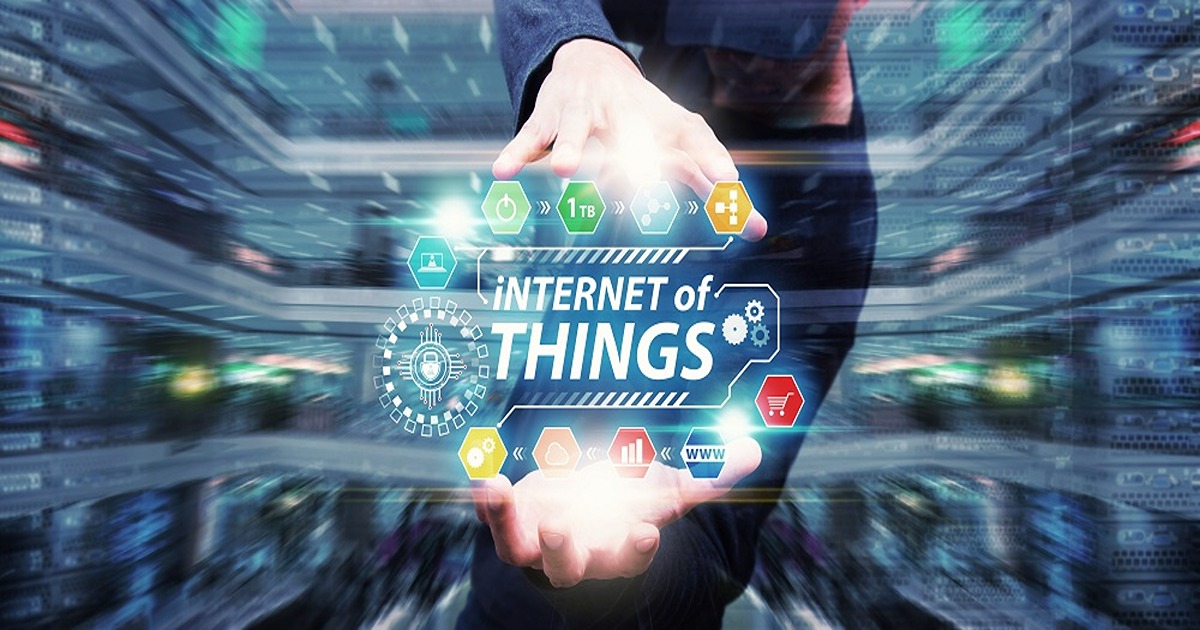
Industrial IoT, IoT Security
Article | July 12, 2023
Every major industry, including retail, transportation, banking, healthcare, and energy, has significantly benefited from the Internet of Things. Processes like supply chains are where the Internet of Things best demonstrates its promise. Applications for management, forecasting, and oversight aid fleet managers in increasing distribution's operational effectiveness and decision-making openness.
Some of the primary goals for IoT deployment in supply chain management include tracking and monitoring. For example, warehouse and fleet managers can use technology to keep an eye on their stock and freight.
Reasons to Use IoT in Supply Chain Management
Real-time Location-tracking
Thanks to the Internet of Things, managers have access to a consistent stream of real-time data on the product's location and the environment surrounding transportation. You may keep track of the delivery of both finished items and raw materials, and you will be informed if the product is transported in the wrong direction.
Monitoring of Storage Conditions
Environmental sensors allow management to monitor cargo conditions and take immediate action when something changes. One of the most popular IoT supply chain systems, for example, collects data on pressure, humidity, the temperature inside vehicles, and other factors that could harm the goods and then automatically adjusts the environment.
Enhance Your Emergency Planning
Supply chain managers can design routes with the use of IoT and data analytics, taking into account traffic, weather, potential accidents, and other delay-causing events that may occur along the way. The Internet of Things collects all the data required to create adaptable backup plans and identify the source of any current delays. Also, supply chain managers can get alerts from the system in real time, which speeds up reducing risks.
Forecast Goods Arrival and Movement
IoT devices and data analytics systems are used by managers to enhance the decision-making process and boost the accuracy of delivery estimates. Real-time tracking lets businesses keep track of products as they are shipped, predict when they will arrive, and plan for and reduce the risk of delays.
Conclusion
There are many different IoT applications for supply chain management. For example, it improves communication between parties, makes it easier to track and monitor commodities, and makes planning more precise.
As long as you have a clear goal for what you need the technology to achieve for you, an IoT-based platform is an excellent investment for both small and large organizations. It's also essential to bring on a talented team for the design and development phase.
Read More

IoT Security
Article | July 17, 2023
Physical and digital security are changing due to cloud-based IoT software, which makes it possible to combine them and use them to utilize data better. In almost every sector, data is essential to success, and security is no exception. To better understand what's going on in your business, you can combine cloud-based solutions that contain all the information on a single interface. For instance, integrating security camera feeds with cloud-based access control systems enables real-time visual identification verification.
Utilizing cloud-based IoT technology also enhances productivity and enables quick replies. Combining digital and physical security, often known as security convergence, is another technique to optimize IoT and cloud-based security solutions. To guard against internet flaws and intrusions, a cloud-based physical security system needs cybersecurity software. In a similar vein, physical security measures prevent sensitive data from getting into the wrong hands. Teams for physical and cyber security might combine to provide a more comprehensive plan of action.
Maintaining current versions of the technology you are using in your security plan is necessary for future-proofing your technology. To ensure that your cloud-based system has no vulnerabilities that could expose your company to cybersecurity risks, it is crucial to keep all software updated. Updates can be automated and carried out remotely with cloud-based software, requiring little effort on your part to keep your software current.
You have the chance to develop a security system that is future-proof when a firm adopts cloud-based IoT technologies as part of your security plan. When organizations use IoT technology, cybersecurity is a significant concern. However, combining physical and digital security lets you ensure your cloud-based system is well-protected from vulnerabilities. In addition, your security and IT teams will be better able to manage the evolving security landscape if you combine physical and digital security ideas.
Read More

IoT Security
Article | July 5, 2023
Explore the IoT security solutions for critical issues and proactive solutions for the safe implementation of connected devices. Delve into cross-domain interactions for secure data storage.
Contents
1. Introduction
1.1 Significance of IoT Security for Safe Implementation
2. IoT Security Landscape
2.1 Emerging Threats in IoT Environments
2.2 Importance of Proactive Security Measures
3. Challenges Posed in IoT Systems
3.1 Cross-Domain Interactions
3.2 Denial of Service (DoS) Attacks
3.3 Insecure Interfaces and APIs
3.4 Vulnerable Third-Party Components
3.5 Safeguarding Data Storage and Retention
4. Solutions to Prevent Threats
4.1 Secure Integration and Communication
4.2 Traffic Monitoring and Analysis
4.3 Robust Authentication and Authorization Protocols
4.4 Patch Management and Vulnerability Monitoring
4.5 Access Control and User Authentication
5 Conclusion
1. Introduction
1.1 Significance of IoT Security for Safe Implementation
The significance of IoT connectivity and security for safe implementation is paramount in today's interconnected world. Some essential points highlight its importance at both the business and advanced levels. IoT devices collect and transmit vast amounts of sensitive data. Without proper security measures, this data can be intercepted, leading to breaches of privacy and potential misuse of personal or corporate information. Implementing robust IoT security ensures the protection of data throughout its lifecycle. Safeguarding Critical Infrastructure is crucial as Many IoT deployments are integrated into critical infrastructure systems such as power grids, transportation networks, and healthcare facilities. A breach in the security of these interconnected systems can have severe consequences, including disruption of services, financial losses, and even threats to public safety. IoT security helps mitigate these risks by preventing unauthorized access and potential attacks.
Mitigating financial losses, ensuring operational continuity and preventing IoT botnets and DDoS attacks contribute to security as IoT devices are often integrated into complex ecosystems, supporting various business operations. In recent years, compromised IoT devices have been used to create massive botnets for launching distributed denial-of-service (DDoS) attacks. These attacks can overwhelm networks and cause significant disruptions, affecting the targeted businesses and the internet infrastructure as a whole. Robust IoT security measures, such as strong authentication and regular device updates, can help prevent these attacks.
2. IoT Security Landscape
2.1 Emerging Threats in IoT Environments
Botnets and DDoS Attacks
Botnets, consisting of compromised IoT devices, can be leveraged to launch massive distributed denial-of-service (DDoS) attacks. These attacks overwhelm networks, rendering them inaccessible and causing disruptions to critical services.
Inadequate Authentication and Authorization
Weak or non-existent authentication and authorization mechanisms in IoT devices can allow unauthorized access to sensitive data or control of connected systems. This can lead to unauthorized manipulation, data breaches, and privacy violations.
Firmware and Software Vulnerabilities
IoT devices often rely on firmware and software components that may contain vulnerabilities. Attackers can exploit these weaknesses to gain unauthorized access, execute malicious code, or extract sensitive information.
Lack of Encryption and Data Integrity
Insufficient or absent encryption mechanisms in IoT communications can expose sensitive data to interception and tampering. Without data integrity safeguards, malicious actors can modify data transmitted between devices, compromising the integrity and reliability of the system.
Physical Attacks and Tampering
IoT devices deployed in public or accessible locations are vulnerable to physical attacks. These attacks include tampering, theft, or destruction of devices, which can disrupt services, compromise data, or manipulate the functioning of the IoT ecosystem.
Insider Threats
Insiders with authorized access to IoT systems, such as employees or contractors, may abuse their privileges or inadvertently introduce vulnerabilities. This can include unauthorized access to sensitive data, intentional manipulation of systems, or unintentional actions compromising security.
Supply Chain Risks
The complex and global nature of IoT device supply chains introduces potential risks. Malicious actors can exploit vulnerabilities in the manufacturing or distribution process, implanting backdoors or tampering with devices before they reach end-users.
2.2 Importance of Proactive Security Measures
Security measures are vital for ensuring the safety and reliability of IoT environments. Organizations can mitigate risks and stay ahead of potential vulnerabilities and threats by taking a proactive approach. These measures include conducting regular vulnerability assessments, implementing robust monitoring and detection systems, and practicing incident response preparedness. Proactive security measures also promote a 'Security by Design' approach, integrating security controls from the outset of IoT development. Compliance with regulations, safeguarding data privacy, and achieving long-term cost savings are additional benefits of proactive security. Being proactive enables organizations to minimize the impact of security incidents, protect sensitive data, and maintain their IoT systems' secure and reliable operation.
3. Challenges Posed in IoT Systems
3.1 Cross-Domain Interactions
Cross-domain interactions refer to the communication and interaction between IoT devices, systems, or networks that operate in different domains or environments. These interactions occur when IoT devices need to connect and exchange data with external systems, platforms, or networks beyond their immediate domain. Incompatibilities in protocols, communication standards, or authentication mechanisms can create vulnerabilities and potential entry points for attackers.
3.2 Denial of Service (DoS) Attacks
Denial of Service attacks are malicious activities aimed at disrupting or rendering a target system, network, or service unavailable to its intended users. In a DoS attack, the attacker overwhelms the targeted infrastructure with an excessive amount of traffic or resource requests, causing a significant degradation in performance or a complete service outage. Protecting IoT devices and networks from DoS attacks that aim to disrupt their normal operation by overwhelming them with excessive traffic or resource requests becomes challenging. The issue here lies in distinguishing legitimate traffic from malicious traffic, as attackers constantly evolve their techniques.
3.3 Insecure Interfaces and APIs
Insecure interfaces and application programming interfaces (APIs) refer to vulnerabilities or weaknesses in the interfaces and APIs used by IoT devices for communication and data exchange. An interface is a point of interaction between different components or systems, while an API allows applications to communicate with each other. Insecure interfaces and APIs can be exploited by attackers to gain unauthorized access to IoT devices or intercept sensitive data. Ensuring secure authentication and authorization mechanisms, proper encryption of data in transit, and secure storage of API keys and credentials, thus, becomes a challenge.
3.4 Vulnerable Third-Party Components
Vulnerable third-party components refer to software, libraries, frameworks, or modules developed and maintained by external parties and integrated into IoT devices or systems. These components may contain security vulnerabilities that attackers can exploit to gain unauthorized access, manipulate data, or compromise the overall security of the IoT ecosystem. Pain points arise from the challenge of assessing the security of third-party components, as organizations may have limited visibility into their development processes or dependencies.
3.5 Safeguarding Data Storage and Retention
Data storage and retention refers to the management and security of data collected and generated by IoT devices throughout its lifecycle. Safeguarding stored IoT data throughout its lifecycle, including secure storage, proper data retention policies, and protection against unauthorized access or data leakage, poses a threat. Ensuring secure storage infrastructure, protecting data at rest and in transit, and defining appropriate data retention policies include safeguarding data and maintaining the privacy of stored data. Failure to implementing strong encryption, access controls, and monitoring mechanisms to protect stored IoT data leads to this issue.
4. Solutions to Prevent Threatsc
4.1 Secure Integration and Communication
Implement secure communication protocols, such as transport layer security (TLS) or virtual private networks (VPNs), to ensure encrypted and authenticated communication between IoT devices and external systems. Regularly assess and monitor the security posture of third-party integrations and cloud services to identify and mitigate potential vulnerabilities. Organizations need to invest time and resources in thoroughly understanding and implementing secure integration practices to mitigate the risks associated with cross-domain interactions.
4.2 Traffic Monitoring and Analysis
Deploy network traffic monitoring and filtering mechanisms to detect and block suspicious traffic patterns. Implement rate limiting, traffic shaping, or access control measures to prevent excessive requests from overwhelming IoT devices. Utilize distributed denial of service (DDoS) mitigation services or hardware appliances to handle volumetric attacks. Organizations must deploy robust traffic analysis and anomaly detection mechanisms to identify and mitigate DoS attacks promptly. Additionally, scaling infrastructure and implementing load-balancing mechanisms become essential to handle sudden surges in traffic during an attack.
4.3 Robust Authentication and Authorization Protocols
Apply secure coding practices and implement strong authentication and authorization mechanisms for interfaces and APIs. Utilize secure communication protocols (e.g., HTTPS) and enforce strict access controls to prevent unauthorized access. Regularly update and patch interfaces and APIs to address any known vulnerabilities. Organizations must conduct regular security audits of their interfaces and APIs, implement strong access controls, and regularly update and patch vulnerabilities to address these effectively.
4.4 Patch Management and Vulnerability Monitoring
Conduct thorough security assessments of third-party components before integration, verifying their security track record and ensuring they are regularly updated with security patches. Establish a process for monitoring and addressing vulnerabilities in third-party components, including timely patching or replacement. Establishing strict vendor evaluation criteria, conducting regular security assessments, and maintaining an up-to-date inventory of third-party components can help address these issues and mitigate the risks associated with vulnerable components.
4.5 Access Control and User Authentication
Encrypt stored IoT data to protect it from unauthorized access or leakage. Implement access controls and user authentication mechanisms to restrict data access based on role or privilege. Establish data retention policies that comply with relevant regulations and securely dispose of data when no longer needed. Clear data retention policies should be established, specifying how long data should be stored and when it should be securely deleted or anonymized to minimize data leakage risks.
It's important to note that these solutions should be tailored to specific organizational requirements and constantly evaluated and updated as new threats and vulnerabilities emerge in the IoT security landscape.
5. Conclusion
Ensuring the safe implementation of IoT requires overcoming various security challenges through proactive measures and a comprehensive approach. By implementing proactive security measures, organizations can mitigate risks and maintain the safety and reliability of IoT environments. Overcoming these challenges requires organizations to invest in certain integration practices, traffic analysis, authentication mechanisms, encryption protocols, and vendor evaluation criteria. Overcoming IoT security challenges for safe implementation necessitates a proactive and comprehensive approach encompassing vulnerability management, monitoring and detection, incident response preparedness, secure design practices, compliance with regulations, and robust data storage and retention mechanisms.
The emergence in IoT security encompasses the incorporation of machine learning and AI for improved threat detection, the application of blockchain for secure transactions and device authentication, the integration of security measures at the edge through edge computing, the establishment of standardized protocols and regulatory frameworks, the adoption of advanced authentication methods, and the automation of security processes for efficient IoT security management. These trends aim to address evolving risks, safeguard data integrity and privacy, and enable IoT systems' safe and secure implementation.
Read More

Industrial IoT, IoT Security
Article | July 11, 2023
Explore the IoT tools for security and maintenance. These IoT monitoring tools addresses cyber security and privacy issues, catering to a various users including industrialists & individuals.
With the proliferation of interconnected devices in the Internet of Things ecosystem, ensuring robust security measures has become crucial to protect against cyber threats. The complexity and diversity of IoT systems pose unique challenges, making thorough security testing an essential practice. To address these challenges, various IoT development tools have emerged that enable organizations to assess and mitigate vulnerabilities in their IoT deployments. In this article, explore the top ten tools to secure IoT and IoT testing, equipping professionals and organizations with the means to identify and address potential security weaknesses, thus bolstering the overall security posture of their IoT infrastructure.
1. AWS IoT Device Defender
AWS IoT Device Defender is one of the security IoT management tools, designed to protect and manage IoT devices and fleets. Its auditing capabilities and continuous monitoring enable users to assess their IoT resources' security posture, identify vulnerabilities, and address potential gaps. By leveraging machine learning models or defining custom device behaviors, it can monitor and detect malicious activities, such as traffic from suspicious IP addresses or unusual connection attempts. The tool provides security alerts for failed audits or behavior anomalies, allowing users to mitigate potential risks quickly. Built-in actions facilitate security issue resolution, including device certificate updates, quarantine, and policy replacements. AWS IoT Device Defender offers automation for security assessments, identification of attack vectors, analysis of historical device behavior, and alarm notifications through various AWS interfaces.
2. Dynamic Application Security Testing
Appknox offers two robust mobile application security solutions: Automated Dynamic Application Security Testing (DAST) and Penetration Testing (PT). With Automated DAST, users can assess the security of their mobile apps in real time while running in their operational environment. The solution provides access to real devices, allowing users to replicate real-life interactions and identify security vulnerabilities. On the other hand, Appknox's Penetration Testing solution delivers reliable and thorough security assessments by expert security researchers. Users can request a manual pentest effortlessly, and the skilled team analyzes apps to identify and eliminate potential threats. The process includes identifying the tech stack, analyzing the threat landscape, setting up breakpoints, testing responses, detecting bugs, and performing advanced threat exploits.
3. Enterprise IoT Security
Enterprise IoT Security is a comprehensive Zero Trust solution designed to address IoT devices' security challenges in modern enterprises. It helps eliminate implicit trust and enforces zero-trust principles through least privilege access, continuous trust verification, and continuous security inspection. With this solution, organizations can quickly discover and assess every IoT device, easily segment and enforce the least privileged access, and protect against known and unknown threats. By simplifying operations, Enterprise IoT Security enables faster deployment, with a 15-time faster deployment than other solutions. The solution offers better and faster protection for IoT devices, delivering 70 times more security efficiency and 20 times speedier policy creation.
4. Azure Sphere
Azure Sphere is a secure IoT platform offered by Microsoft that allows businesses to create, connect, and maintain intelligent IoT devices. It provides end-to-end security, from the silicon level to the operating system (OS) to the cloud. With Azure Sphere, organizations can securely connect, manage, and protect existing and new IoT devices. The platform offers over-the-air updates, integration with IoT platform services, and continuous security improvements. It helps businesses deploy real-time security patches, maintain device operations, and accelerate time to market. Azure Sphere incorporates essential security properties and offers comprehensive security and compliance.
5. Microsoft Defender for IoT
Microsoft Defender for IoT is a comprehensive security solution that provides real-time asset discovery, vulnerability management, and threat protection for the Internet of Things and industrial infrastructure, including ICS/OT environments. It offers context-aware visibility into IoT and OT assets, enabling organizations to manage their security posture and reduce attack surfaces based on risk prioritization. With behavioral analytics, it detects and responds to attacks across IT and OT networks. Integrated with SIEM/SOAR and XDR tools, it delivers unified security and leverages threat intelligence for automatic response. Microsoft Defender for IoT is designed to meet the unique security needs of various industries and supports complete endpoint protection when combined with Defender for Endpoint.
6. IoT Security
Forescout offers an IoT security solution that automates security measures and provides visibility for every device connected to the network. Their zero-trust approach ensures complete device visibility, proactive network segmentation, and least-privilege access control for IoT, OT, IoMT, and IT devices. The platform classifies and monitors devices in real time, identifies weak credentials, and enforces strong passwords. It also enables dynamic network segmentation and automates zero trust policy orchestration across multi-vendor environments. Forescout's solution efficiently manages asset inventory and device lifecycle and has been proven to scale for enterprise-level deployments.
7. ThingSpace
The ThingSpace Platform for IoT offers a comprehensive set of iot tools and devices for developing and managing the lifecycle of IoT devices. It enables connectivity management at scale, allowing secure activation on the Verizon network and providing features to troubleshoot, locate, and manage IoT devices. Whether at the prototype stage or ready to scale for enterprise-level deployment, ThingSpace provides the necessary resources for IoT solution development and management. As a Magic Quadrant Leader for IoT Connectivity Services, ThingSpace offers solutions for software management, device readiness, and overall device lifecycle management. Businesses can collaborate with technology leaders through their Executive Briefing Program to achieve their specific goals and gain a competitive edge.
8. Verimatrix
The Verimatrix Secure Delivery Platform offers a unified user experience by combining cybersecurity and anti-piracy services into a comprehensive cloud ecosystem. It provides media companies, content owners, streaming providers, and broadcast operators with a single pane of glass experience for securing content, applications, and devices. Key offerings include Streamkeeper Multi-DRM for cloud-based digital rights management, Verimatrix App Shield for zero code hardening of mobile applications, Verimatrix Video Content Authority System (VCAS) for real-time monitoring, and Streamkeeper Counterspy for cybersecurity and anti-piracy solutions. The platform also facilitates partner integrations, enabling seamless onboarding and revenue preservation.
9. Trustwave
Trustwave's Managed IoT Security provides comprehensive solutions to secure the Internet of Things (IoT) and minimize the risk of compromise. With expertise from Trustwave SpiderLabs, it offers knowledge about network assets, identifies weaknesses in applications, servers, APIs, and cloud clusters, and enables secure IoT deployment with quick validation of fixes. This reduces the risk of compromised devices, which can lead to various threats, including DoS attacks, privacy violations, and data theft. Trustwave's services cater to IoT developers/manufacturers, offering product security reviews, testing, and incident readiness services. For IoT implementers, it provides managed security services and testing to safeguard deployments and associated data.
10. ARMIS Agentless Device Security Platform
The ARMIS Agentless Device Security Platform supports implementing the Critical Security Controls(CIS) framework. Developed by the Center for Internet Security (CIS), these controls are periodically updated by a global community of experts. ARMIS aligns with the CIS Controls and provides a comprehensive set of security controls to address the framework's requirements. The platform caters to enterprises of all sizes and offers different implementation groups based on risk profile and available resources. With ARMIS, organizations can enhance their cybersecurity posture and implement the CIS Controls effectively.
Final Thoughts
Security is a major concern in IoT tools and software due to the proliferation of connected devices, the diverse and complex nature of IoT ecosystems, the need to protect data privacy and confidentiality, the lack of standardization, the long lifecycles of devices, and the distributed and scalable nature of IoT deployments. Addressing these concerns is crucial to prevent unauthorized access, data breaches, and ensure the integrity and privacy of IoT data.
The IoT tools and technologies discussed in this article represent some of the top options for conducting comprehensive IoT security testing. By leveraging these tools, professionals and organizations can proactively identify and address vulnerabilities in their IoT systems, ensuring their data and devices' confidentiality, integrity, and availability. By incorporating these tools into their security practices, organizations can bolster their IoT security strategy and enhance their ability to protect against emerging threats in the dynamic IoT landscape.
Read More